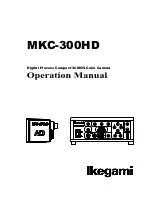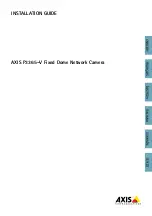
5.When the green indicator lamp
glows steadily, press the shutter-
release button all the way down
to take the picture.
• The flash will automatically fire in low
light.
• The film automatically advances to the
next frame.
The camera uses two AA-size alkaline bat-
teries to supply power for all camera oper-
ations.
• Nickel-cadmium batteries, nickel-metal hydride
batteries, and lithium batteries cannot be used.
1.Open the battery-chamber door by
sliding it in the direction indicated.
• When replacing the batteries, make sure the
camera is off.
• Quartz-date model: the date and time must be
reset when the batteries are replaced.
2.Insert the batteries with the polari-
ties as indicated by + and – marks
on the back of the battery-chamber
door.
3.Close the battery-chamber door and
slide it toward the body to engage
the safety catch.
If the blinking low-battery indicator
appears on the data panel with other indi-
cators, the camera can still operate, but
the batteries should be replaced soon.
If the blinking low-battery indicator appears
alone, the camera is unable to operate due
to insufficient power. Replace the batteries.
LOW BATTERY INDICATOR
INSERTING THE BATTERIES
LOADING THE FILM
Only use 35mm, DX-coded negative film.
ISO 400 is recommended for best results.
• The use of slide film is not recommended.
• Do not use Polaroid instant 35mm film.
Winding problems may occur.
1.Slide the back-cover release down to
open the back cover.
• Always load and unload film in subdued light.
2.Place the film cartridge into the film
chamber. Extend the film leader to
the “FILM TIP” mark. Make sure the
film lays flat.
• If the film tip extends beyond the film tip mark,
push the excess film back into the cartridge.
FULL-AUTO OPERATION
1.Press the main switch to turn
the camera on.
• To conserve power, the camera automati-
cally turns off if an operation is not made
within eight minutes.
4.Place the focus frame on the
subject and press the shutter-
release button partway down.
• The subject must be at least 90cm (3 ft.)
from the camera.
The red-eye reduction lamp auto-
matically activates when the shut-
ter-release button is pressed part-
way down. The lamp reduces the
red-eye effect when photograph-
ing people or animals in low-light
situations.
Step
Step
Step
The film will rewind automatically
after the last frame has been
exposed. When zero (
) is dis-
played on the data panel frame
counter, open the back cover and
remove the film.
Step
3.Close the back cover.
• The film is automatically loaded into the cam-
era. Wait for the film-transport motor to stop.
The frame counter will display the number of
frames remaining on the roll.
• If the film has been loaded improperly, the
frame counter will display zero (
). Open the
back cover and repeat the loading procedure.
2.Hold the camera steady, making
sure your fingers do not cover
the flash, lens, or AF windows.
• For vertically framed pictures, turn the
camera so the flash is positioned above
the lens as illustrated.
RED-EYE REDUCTION
To rewind the film before the end
of the roll, turn the camera on
and gently press the rewind but-
ton.
MANUAL REWIND
REWINDING THE FILM
• If the green indicator lamp blinks rapidly, your subject is closer than
the minimum focusing distance of 90cm (3 ft.). The shutter will not
release.
• If the subject is very close to the camera, the green indicator lamp
may glow steadily, but the picture will not be in focus. The shutter can
be released.
3.Look through the viewfinder and
press the T side of the zoom
lever to zoom in or the W side
to zoom out.
T = telephoto: zoom in
W = wide-angle: zoom out
Eng_9222_2475_21.qxd 2002.3.22 2:06 PM Page 2






















